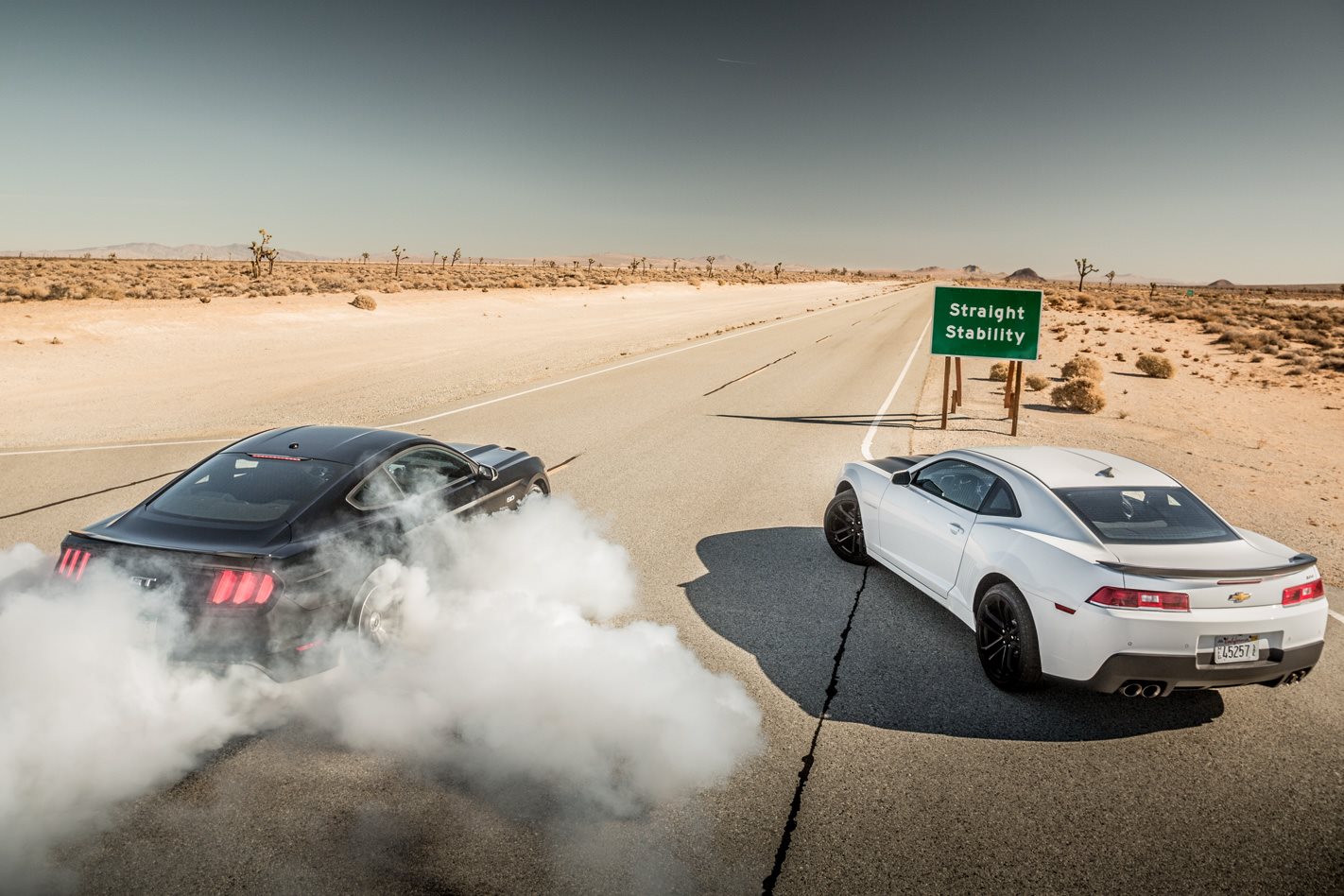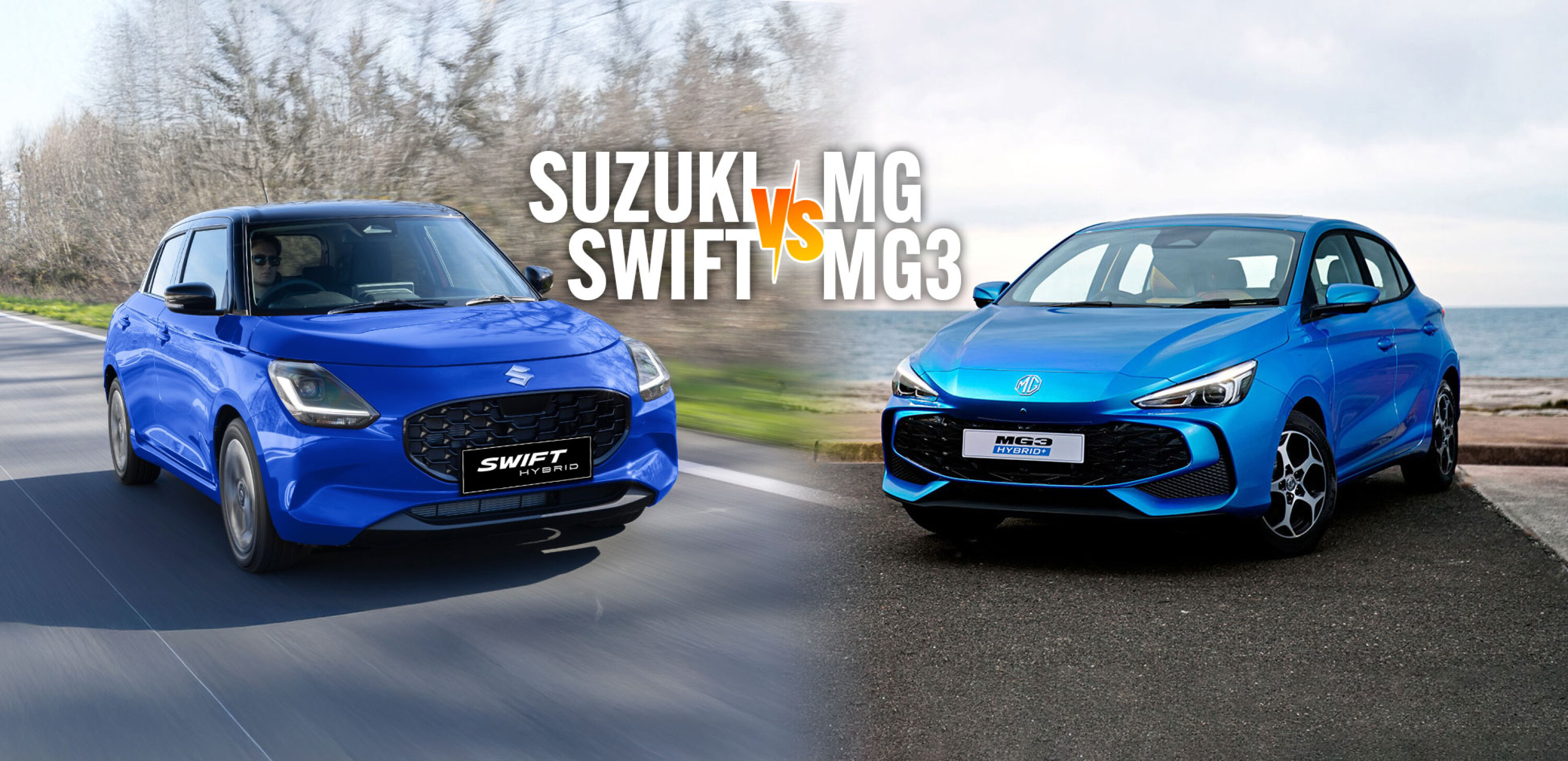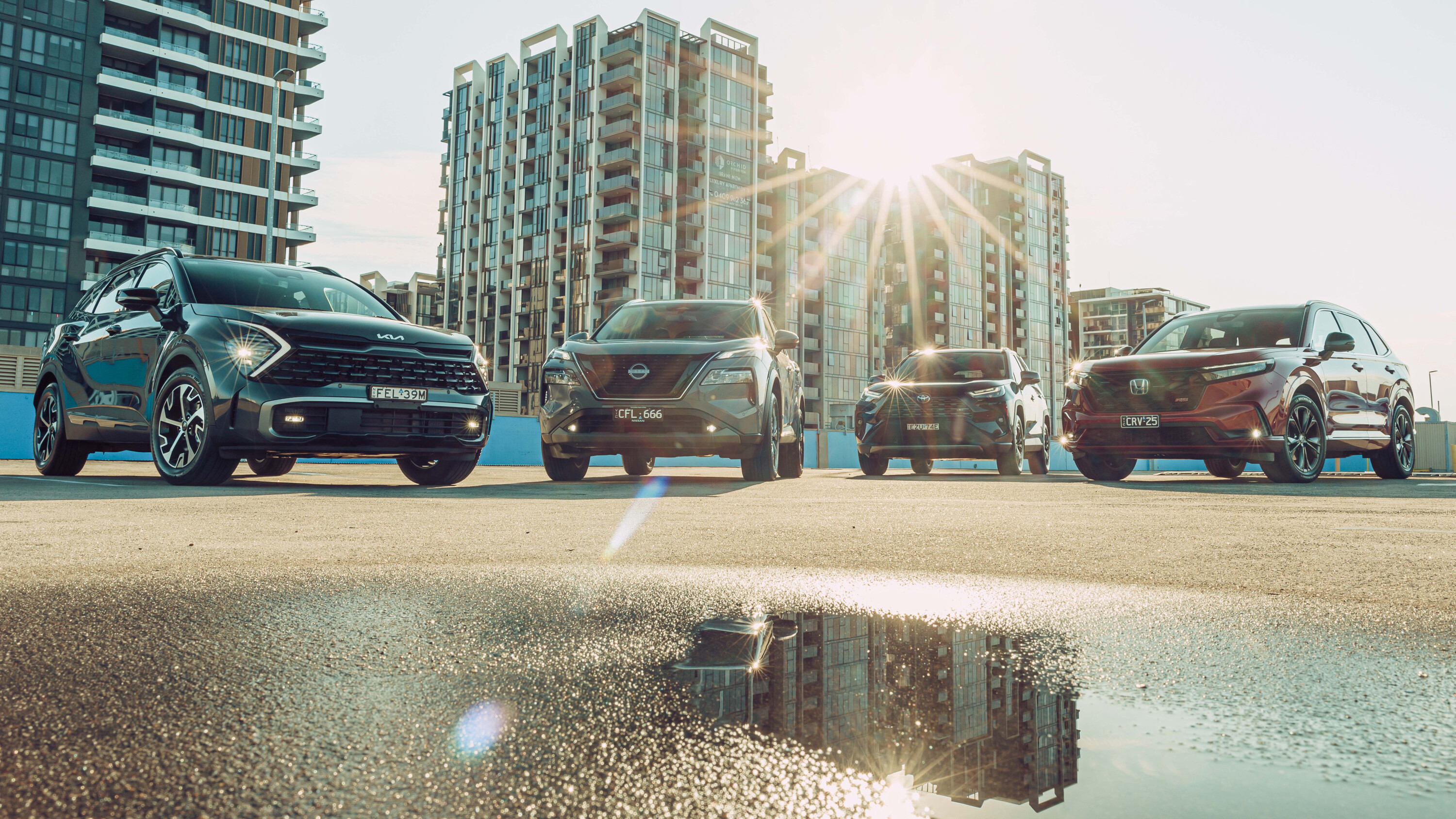The new Ford Mustang squares off with its old nemesis the Chevrolet Camaro in California’s high Sierras.
THUS it was written: Lee Iacocca’s pen smote the boardroom table and up popped the Ford Mustang. It stopped the 1964 World’s Fair in New York cold on debut, and then created an entirely new class of American sports cars. A money monsoon fell on the bean-counters at Ford’s Glass House for the two-and-a-half years it took mighty General Motors to respond with its Chevrolet Camaro, and the two cars have been at each other’s throats ever since.
Neither the Mustang nor the Camaro, nor even the Cougars and Challengers and Javelins and ’Cudas that followed, would sway Enzo Ferrari in his firm conviction that “the only good sports car America ever built was the Jeep”. But to deny the charms of the pony car in all its peculiarly American excess is to have the most cynical view of cars in general.
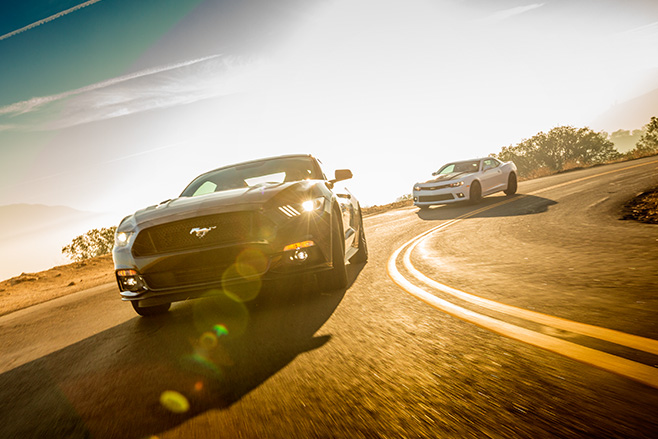
The future reliably frustrates all attempts at prediction, and all that really matters is this: today, the sun rose on two pony cars – one brand new, one still a couple of years away from a re-boot – that incorporate the best environmental protections, safety technology and street performance that the industry can muster at an affordable price. And they retreat not one iota from the promise of freedom and personal expression made by Iacocca’s original Mustang in 1964.

Fittingly, the Mustang is not only the first pony car, but the only one to survive in an unbroken (though not unsullied) bloodline from the original. Its record, especially since the 1980s, has been one of continuous gradual improvement from year to year, sometimes so minute as to virtually go unnoticed.
With the 2015 overhaul, done with a gaze fixed steadily on the target of increased international appeal, the model breaks its slow trot of progress and instead makes one giant leap for Mustang-kind. Chief engineer Dave Pericak said the initial plan, to leverage more of Ford’s existing hardware, was eventually shelved as engineers struggled to make a new-enough Mustang from the bones of the old one. Ultimately, he says, they were given a freer hand to “make a Mustang that we can put a 50th anniversary badge on and be proud of”.

Underneath, Ford decided to finally ditch the solid axle for an independent rear suspension, which in turn required a rethink of the strut front suspension. And if they were doing that, they thought, might as well look at the subframes. And the brakes. And the steering linkages and cross-bracing. And so on, until Ford pretty much had a new car.
The Camaro was facelifted in 2013, followed by the introduction of a couple of new and ever more weaponised models, including this SS 1LE with its meaner suspension, and the totally track-rat Z/28. The top power dog remains the 433kW ZL1, however all will be short-lived as a new Camaro breaks cover in 2016 sporting the LT4 V8 from the current Corvette.

Inside, the Mustang is the new kid and it shows, with the latest and greatest materials and electronic frippery, such as collision warning, parking sensors and a cross-traffic alert that prevents you from backing out the driveway into an oncoming petrol tanker. Drop the extra $US4000 ($A4760) for a GT Premium and you’re swaddled in soft-touch leather, aluminum trim and chrome accents. Click the unlock button on the fob and tiny lamps hidden in the side-view mirrors project the galloping Mustang logo on the ground next to the car, a great Batman-style party trick.
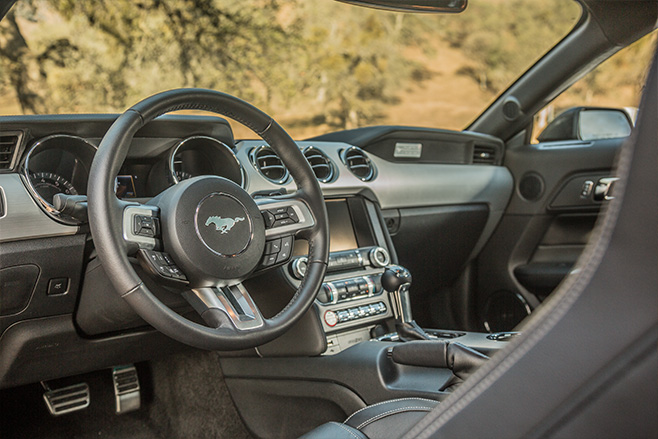
The screen in the Mustang’s cluster can be configured to digitally render all kinds of fascinating gauges you didn’t know you needed, such as twitching dial indicators for the air/fuel ratio, intake boost/vacuum (though there’s no boost on this version, of course) or inlet-air temperature. It’s with this screen and accompanying steering-wheel buttons that you engage the track mode for the stability control and the line-lock function, which at a standstill allows you to electronically lock just the front brakes and barbecue the rear tyres for up to 15 seconds. A panel toggle lets you dial up three levels of steering effort.
By comparison, the Camaro looks like public infrastructure inside, even with its optional two-grand Recaro buckets. The phone company has cars with fancier trim than this. Ponds and rivers of plain black plastic stand in for design, though swathes of synthetic suede, especially wrapping the shifter and steering wheel rim with attractive herring-bone stitching, at least provide a sense of performance authenticity at the touch points. If you didn’t like the Camaro’s green-lit gauge presentation when it was new, staring wide-eyed at you like Elton John in his mega-sunnies heyday, you won’t love it any more today as it rapidly approaches retirement.

Of these two cars, the Camaro is the corner killer. First, Chevy fits blocky Goodyear Eagle F1 Supercar G2 tyres to the 20-inch rims of the 1LE spec, which combined with the stiff suspension package makes this SS a sticky, stable handler. The fierce turn-in and cornering grip indicate how deeply the Camaro sinks its claws into the pavement. With all that gum on the road, it’s difficult to even break the rear end sideways for the photographer. The downside is a crashing expressway ride complemented by extra thrum from those big rubber rolling pins.
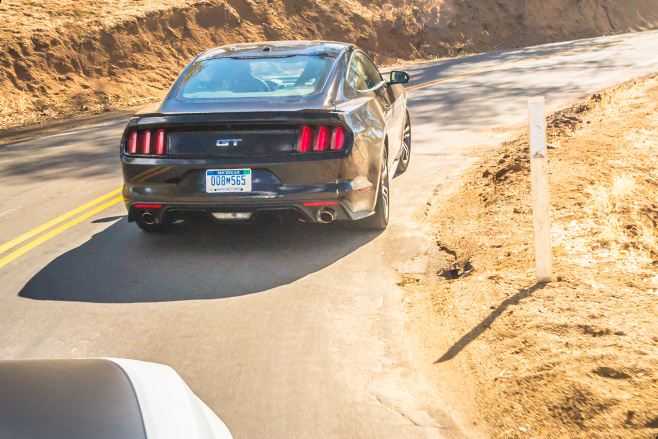
The Mustang GT isn’t really a bad handler; its base suspension is just set on the soft side. It is a perfect pleasure to drive at seven-tenths, with direct steering and reassuring brakes. Ford’s engineers obviously left overhead clearance in the suspension for performance tunes and future models such as the already announced Shelby GT350 and a Boss that is almost certainly coming. That frees up the GT to be just that, a comfy, everyday gran turismo.
Both cars make the right big-bore snorts from their V8s, though the Mustang’s oddly rhythmic puff-puff from its twin tailpipes at idle sounds almost computer-generated. They’re evenly matched to 100km/h, with times in the mid-fours, and to 400m. Separate testing of a six-speed manual Mustang GT proves the automatic suffers nothing in acceleration and would be even quicker if launched on proper tyres. They also burned fuel at similar rates, the Mustang edging the Camaro.
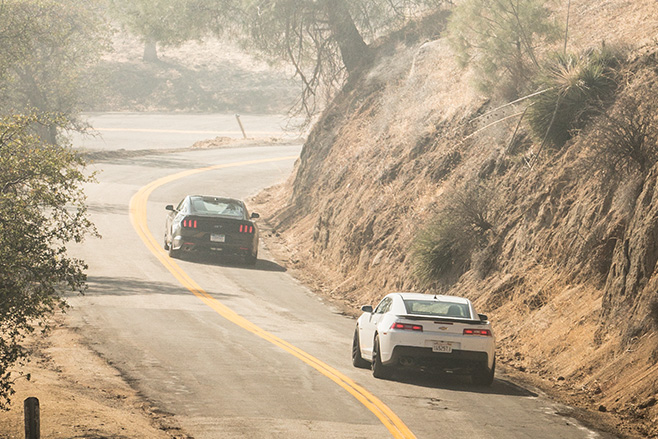
Our Camaro is definitely the most nostalgic. Even with its sharper handling, it’s the most I’ll-be-18-forever car of the pair, recalling hot summer nights on long-gone main streets and some of the nuisances of muscle cars that you didn’t mind or even notice when you were a teenager.
This Mustang, conversely, is from people who figure that if you’ve got that much to spend, they have to persuade you not only against buying a Camaro, but also an Audi A5 or a BMW 428i. In America, at least.
The many-button Mustang wants to play in the international sand box, albeit with a distinctly American girth and attitude. The Camaro has international roots but has gone completely native, as American as guacamole on a pizza. But even America is ready for something a little less old school, and the Mustang is it.
Four for economy
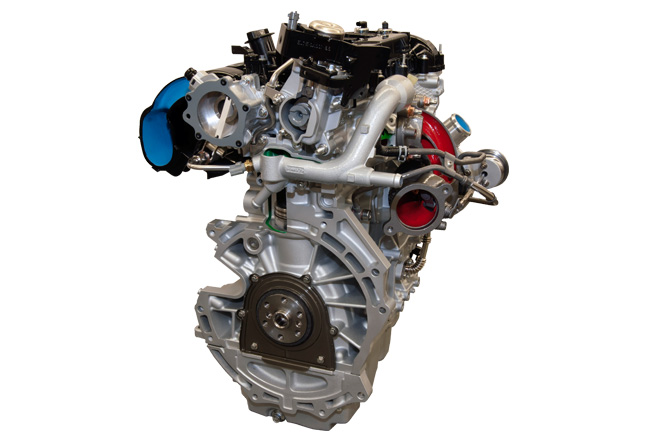
Muscle-car buyers only see a four-potter as half a V8, but Ford figures the potential fuel economy gain (9.4L/100km in federal testing versus 12.4 for the V8) should help it win over up to 40 percent of customers. We’ll see; US fuel prices have dropped significantly since the engine’s debut.
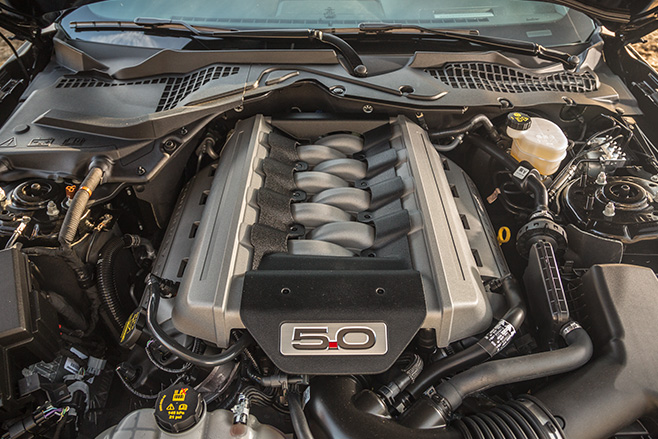
However, if you come to the ’States and rent a Mustang convertible for the required drive up California’s Highway 1, as many visitors do, you’re most likely to get the entry-level 224kW 3.7-litre V6.
Small-block survival

Current Camaro line-up includes the 298kW L99 on automatic SS and 318kW LS3 for manuals, while Z/28’s 7.0-litre LS7 makes 376kW and ZL1’s supercharged 6.2-litre LSA produces 427kW. In 2016, Camaro gets the Corvette’s new LT1 and its supercharged LT4 variant, which update the small-block with direct injection and cylinder deactivation.
No doubt Chevy is closely watching the sales of the EcoBoost Mustang to see if buyers would swallow a four-cylinder Camaro. Either way, there likely won’t be one at launch.

